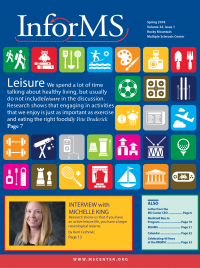The critical safety net for most disabled Americans is Social Security Disability Insurance (SSDI). By providing an income to some people with disabilities, SSDI has prevented many from experiencing the harshest effects of poverty. SSDI recipients also receive Medicare, another critical benefit, which ensures continued access to medical care to people who might otherwise be uninsurable.
Even with Medicare as a benefit, however, serious medical insurance coverage problems persist for many people with disabilities. The Medicaid Buy-In program offers health care coverage to people with disabilities who are working, and whose earnings and resources might otherwise make them ineligible for Medicaid. The Medicaid Buy-In program is an optional Medicaid program that states may choose to provide. Most states, but not all, have such a program. Outlined below are four scenarios in which the Medicaid Buy-In Program could be a helpful option.
A) For SSDI Recipients Pending Medicare Coverage
Unfortunately, there is a thirty-month waiting period between the onset of an SSDI beneficiary’s disability and the beginning of Medicare coverage. Income from SSDI frequently is in excess of the threshold for obtaining regular Medicaid. Indeed, some recipients find that they lose Medicaid once they begin receiving an income through SSDI. While an SSDI income is above the Medicaid threshold, it is often not high enough to allow people to obtain coverage in the marketplace. This creates a challenging gap in coverage for many.
For those SSDI recipients who are awaiting Medicare coverage, the Medicaid Buy-In program, which is available in most states (FL, TN, HI, AL and DC do not have such programs), may provide a much needed solution. The program is designed as a work incentive for people with disabilities. Thus, it is only available to those who are working.
Importantly, there is no minimum number of hours required for the Medicaid Buy-In Program. This means that even very limited work will suffice to allow eligibility for Medicaid. An example may help. Let’s assume that Joan Smith, a married woman with a working husband, has recently started receiving Social Security Disability benefits of $2000 per month. Because this amount is more than 133% of the federal poverty level (approximately $1800 for a couple), even without factoring her husband’s income, Ms. Smith would be ineligible for regular Medicaid and would likely find marketplace insurance prohibitively expensive. Therefore, she may be uninsured during the 30-month Medicare waiting period. However, if Ms. Smith began dog sitting, even at a low hourly rate a few hours per month, she might be eligible to buy Medicaid for a very low rate, at least in Colorado. See the table below for Colorado’s Medicaid Buy-In income limits and Premium Guide.
Colorado’s Medicaid Buy-In rules are among the most favorable in the country. The monthly income limit for eligibility is $4414 and there is no asset limit. Spousal income is not considered. In other states, much more stringent rules apply. For a review of rules by state, please see the following link from the Kaiser Family Foundation: https://www.kff.org/other/state-indicator/medicaid-eligibility-through-buy-in-programs-for-working-people-with-disabilities
To apply for the Medicaid earnings program, you will need to call and then probably schedule a visit through your county’s department of social services.
It is very important to be mindful of Social Security’s earning limitations—earnings above a certain amount will trigger Social Security’s Trial Work Period, which may ultimately result in a cessation of benefits. Social Security Disability recipients will not risk losing their benefits with very low earnings. Specifically, earning under $850 per month (a number that changes yearly) will not risk triggering a Trial Work Period. In all cases, remember to notify Social Security of any earnings.
B) For SSDI Recipients Covered by Medicare
The Medicaid Buy-In may also make sense for Social Security recipients who have already received Medicare because Medicaid generally has much lower copayments for medications, medical office visits, and durable medical equipment.
Moreover, some Medicare recipients have opted for the Medicare Advantage Program. While there are some upsides to this, including a limit on out of pocket expenses, the networks are very narrow, meaning your choice of clinicians is very small. For example, the clinical care team at the Rocky Mountain MS Center is not within network for any Medicare Advantage Program.
Consider limited, part-time work and applying for the Medicaid Buy-In Program if you find that your Medicare Advantage Program’s network of clinicians is overly restrictive.
C) Those Working With a Disability
Finally, the Medicaid Buy-In may make sense for people with a disability (e.g., someone with MS who uses a walker) who remain substantially engaged in the work force and, therefore, are not receiving Social Security Disability benefits.
To learn more about the Medicaid Buy-In program in Colorado, see https://www.colorado.gov/pacific/hcpf/medicaidbuyinprograms. For those living outside of Colorado, simply use a search engine to find specific information about the Medicaid Buy-In Program in your state.
Mr. Stewart directs the RMMSC’s Disability Law Program. For a free consultation, please contact RMMSC’s Disability Law Clinic at (720) 301-9708


